- Home
- TV History
- Network Studios History
- Cameras
- Archives
- Viewseum
- About / Comments
Skip to content
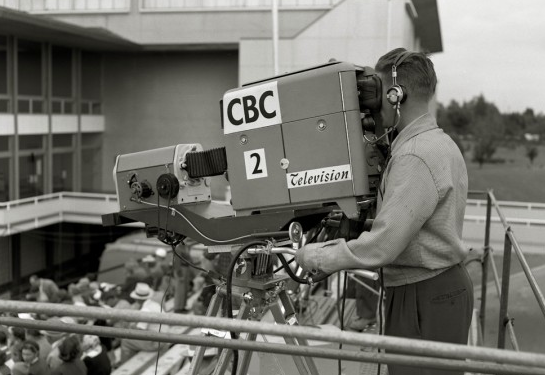

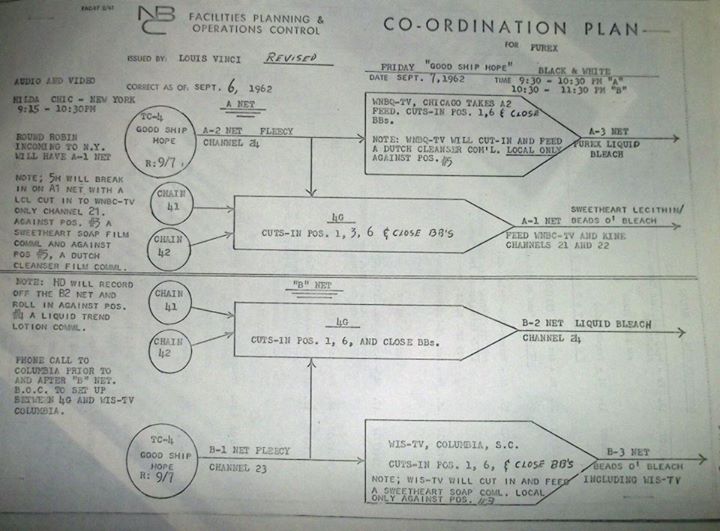

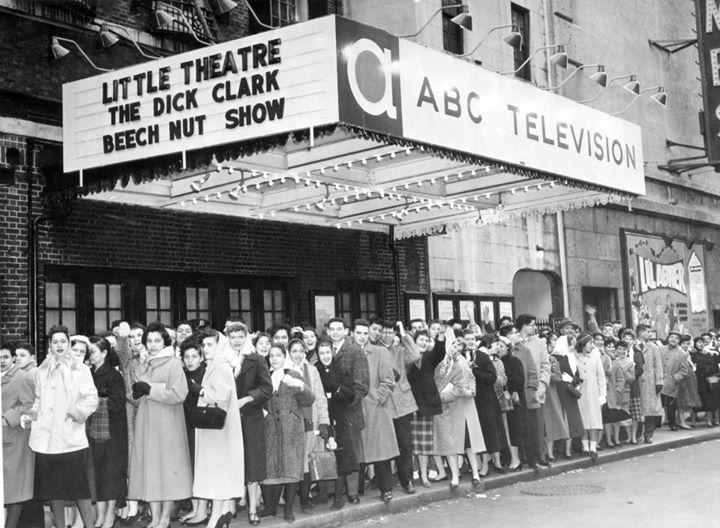



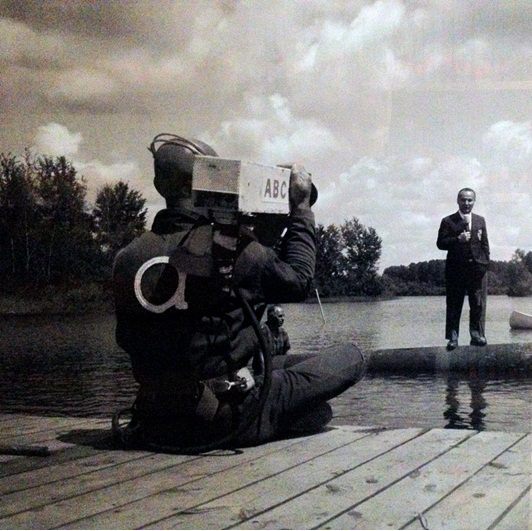

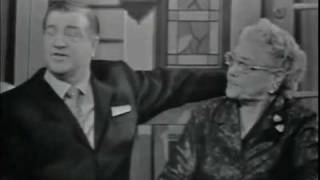



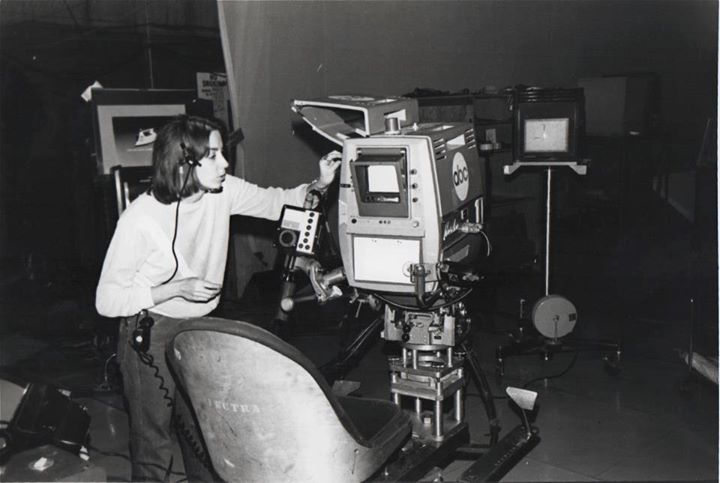

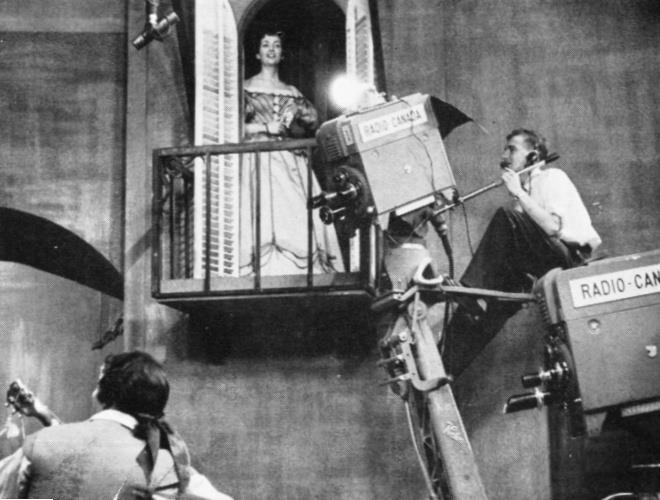

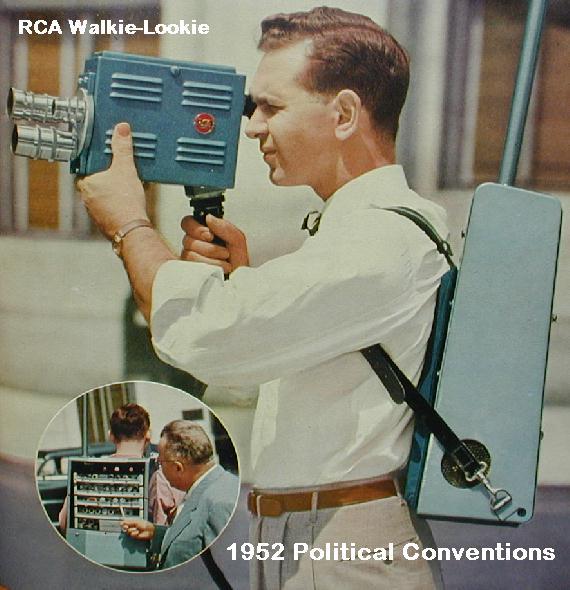

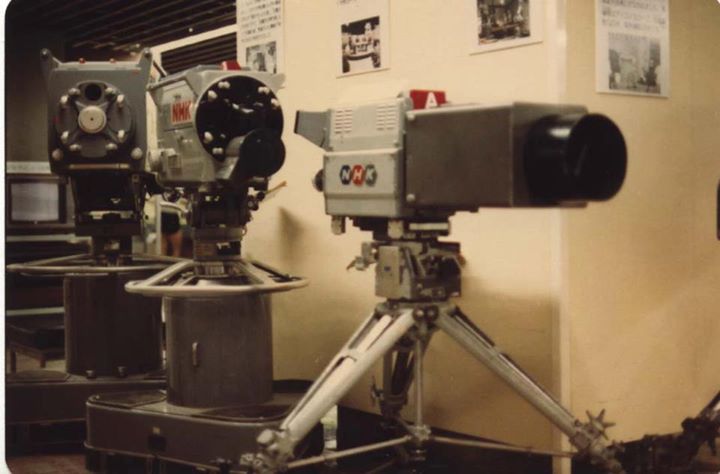

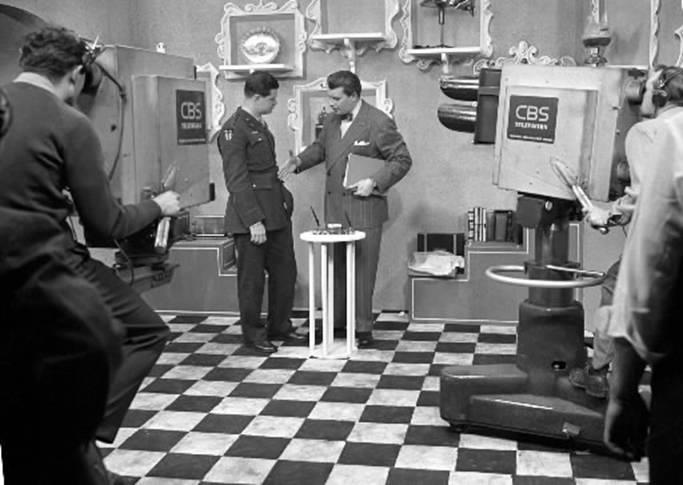



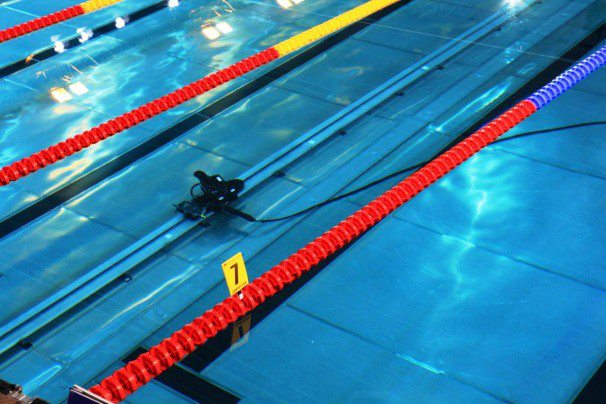





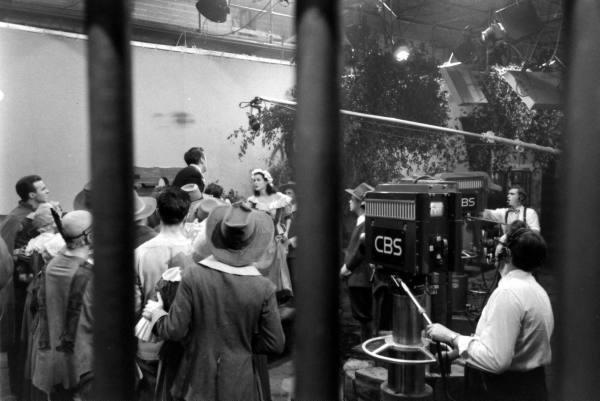

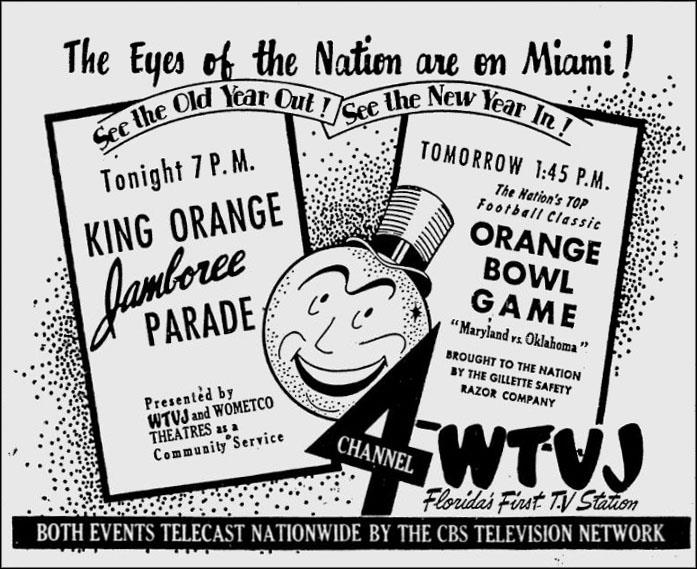

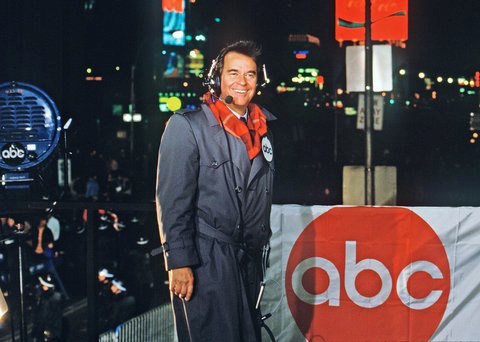

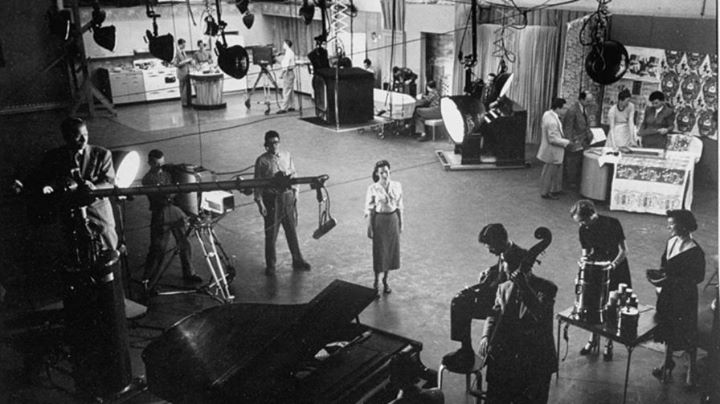

Posts in Category: TV History
Page 121 of 136
« Previous
1
2
3
4
5
6
7
8
9
10
11
12
13
14
15
16
17
18
19
20
21
22
23
24
25
26
27
28
29
30
31
32
33
34
35
36
37
38
39
40
41
42
43
44
45
46
47
48
49
50
51
52
53
54
55
56
57
58
59
60
61
62
63
64
65
66
67
68
69
70
71
72
73
74
75
76
77
78
79
80
81
82
83
84
85
86
87
88
89
90
91
92
93
94
95
96
97
98
99
100
101
102
103
104
105
106
107
108
109
110
111
112
113
114
115
116
117
118
119
120
121
122
123
124
125
126
127
128
129
130
131
132
133
134
135
136
Next » Marconi Mark IIs and Great Detail Of Early Zoom Lens
On January 15, 2013
- TV History
When The CBUT Mark IIs Were Brand New
This is a photo from August of 1954 showing camera one of four CBUT Marconi Mark IIs covering swimming competition at Vancouver’s newly constructed Empire Pool. Vancouver was the host city of the Empire (aka Commonwealth) Games of 1954. This camera is equipped with a Watson 5 x 1 zoom lens. Just above the cameraman’s hand, you can see the manual zoom demand.
‘The Good Ship Hope’: NBC September 7, 1962, Operations map
On January 14, 2013
- TV History
‘The Good Ship Hope’: NBC September 7, 1962
Here is the Operations map of this show’s feed. Hosted by Ralph Bellamy, this was a one hour special about the hospital ship ‘Hope’ helping civilians in Vietnam. Thanks to Gady Reinhold for saving and sharing this.
The Little Theater: 240 West 44th Street in Midtown Manhattan
On January 14, 2013
- TV History
The Little Theater: 240 West 44th Street in Midtown Manhattan
Now known as The Helen Hayes Theater, this was formerly the Little Theater, New York Times Hall and Winthrop Ames Theater. It was built with 597 seats, but reconfigured for TV, seating was reduced to 300.
CBS used the theater as a radio studio for a time, but it was converted to television by ABC in 1958 and renamed the Little Theater. Dick Clark’s ‘Saturday Beechnut Show’ originated there from February 1958 through September 1961. During this time ABC also broadcast the daytime show ‘Who Do You Trust’ with Johnny Carson from the theater.
In the mid 60s, Westinghouse Broadcasting taped the popular syndicated Merv Griffin Show there and later, The David Frost Show. The 1969-70 season of the game show ‘Beat the Clock’ hosted by Jack Narz was also taped there. In April 2011, Colin Quinn’s one-man show ‘Long Story Short’ was recorded there as an HBO special.
August 6, 1960: ‘The Twist’ Debuts & How Chubby Got His Name!
On January 14, 2013
- TV History
August 6, 1960: ‘The Twist’ Debuts & How Chubby Got His Name!
At the start of this great clip, Dick Clark’s intro of Chubby is done in front of a crane mounted RCA TK10 at The Little Theater, home to Clark’s New York based ‘Saturday Night Beechnut Show’ which he did once a week for 3 years. Below, Conway Twitty, Chubby Checker and Dick Clark twist it up for the camera at rehearsal. In 1960, Conway was still a pop artist and had not yet gone to the country side.
How Chubby Checker Got His Name:
After hearing Philadelphia’s Ernest Evans do a spot on impression of Fats Domino one night, Dick Clark’s wife nick named him Chubby Checker. Later, Dick talked to a local record label about rerecording Hank Ballard’s original version of ‘The Twist’ with a black artist and suggested Evans. The rest as they say is history.
The Famous, ABC Made, Hand Held Camera, In Action!
On January 14, 2013
- TV History, Viewseum
The Famous, ABC Made, Hand Held Camera, In Action!
At the very front of this clip from ABC’s Silver Anniversary, Frank Gifford holds up and demonstrates the ‘Creepy Peepy’ camera and suggests it came into use in September of 1960 on the sidelines when ABC won the rights to televise college football.
It is actually made from the GE PE 7 that you see at the bottom of this page. Our friend Don ‘Peaches’ Langford tested and used this camera at the ABC Los Angeles campus and at west coast events, but I think there was more than one of these made. I recently saw the video of the log rolling event this camera is shooting below…it was on a Wide World Of Sports show and the picture looked as good as the big camera pictures. I’m trying to relocate it.
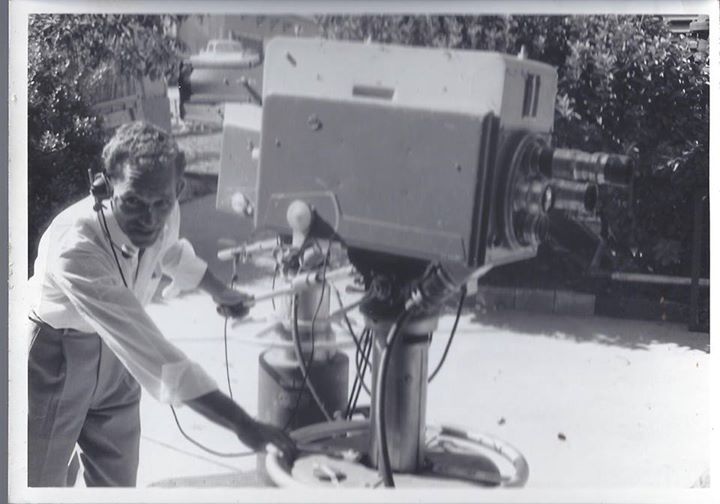


WOW! Lou Costello was One Hell Of A Guy!
On January 13, 2013
- TV History
WOW! Lou Costello was One Hell Of A Guy!
He had some hard times, but was a major philanthropist. I smiled most of the way through this whole episode. Very touching tribute.
http://www.youtube.com/watch?v=xAbIPO2rTkg
Starring Bud Abbott, Carole Costello, Chris Costello, Lou Costello , Paddy Costello-Humphreys, Ralph Edwards, and Edward Sherman… Lou Costello was surprise…


Look Sharp…Feel Sharp…Be Sharp!
On January 13, 2013
- TV History
Look Sharp…Feel Sharp…Be Sharp!
That was the Gillette Razor ad copy and I still remember it, and the great opening music of the Cavalcade Of Sports show like it was yesterday. I used to watch this with my dad on Friday nights. Here’s the intro…enjoy.
http://www.youtube.com/watch?v=C6cyy_rziuk
Featuring the Look Sharp March 1958
Flying By The Seat Of Her Pants…Almost
On January 13, 2013
- TV History
Flying By The Seat Of Her Pants…Almost
Before mounting the Chapman Electra stage crane for another round of ‘Family Feud’, our friend Donna Quante ‘checks the oil’ on her Norelco PC70. Very nice shot and we thank Donna for it, and many others. Do you have pix to share?
Flying By The Seat Of His Pants…But Just Barely
On January 13, 2013
- TV History
Flying By The Seat Of His Pants…But Just Barely
Marconi Mark II cameras capture the action of scene, but the real action is on the end of that dolly boom. That’s quite a balancing act. I see a Vinten logo on the boom arm, but don’t recognize the model. Neither the Pathfinder II dolly or the Heron stage crane had lattice work supports in the boom arms like this one. Maybe this is a Pathfinder I manual dolly. Anyone know?
The First Hand Held Broadcast Camera
On January 13, 2013
- TV History
The First Hand Held Broadcast Camera
This is the RCA ‘Walkie Lookie’ miniature wireless Vidicon camera designed for coverage of the 1952 Political Conventions. With so much attention to the Ikegami ‘Handy Lookie’ in the posts below, I just wanted to remind you who was actually first with this technology. RCA and the USA!
The First Ikegami Studio Camera
On January 13, 2013
- TV History
Mystery Solved #1 The First Ikegami Studio Camera
Without a doubt, this is the first professional studio camera from Ikegami. The camera with the big box zoom lens is the Ikegami TK 301A. I had searched and searched for a photo, but all I could find was a tiny thumbnail size. When I blew it up, I realized I had a photo of it in my archives from the NHK Museum in Japan. FYI, the two cameras behind it are early Toshibas. This camera debuted in 1971 and made the name of Ikegami synonymous with cameras. The TK 301A was used extensively in the Sapporo Winter Olympic Games in Japan.
Ikegami was busy developing it’s ENG line with the HL 33 debuting in 1973 and the HL 79A in 1979. Their experience with these lead them to the studio sized HK 312 in 1981. With the introduction of the 312, came the change from the TK designation to HK (Handy Kamera) and of course the HL stands for Handy Lookie.
Mystery Solved…First Pedestals Were Electric!
On January 13, 2013
- TV History
Mystery Solved #2
I had thought the old pedestals used with the Iconoscope cameras in the 30s and 40s were perhaps hydrolac, but…not anymore. Thanks to further research by our friend Paul Beck, we now know these peds had an electric motor to take them up and down. In reexamining my archives, I came across this photo that may actually show the foot switch that operates the motor. Take a close look at the bottom right of the pedestal. These cameras were more bulk than weight and a small electric motor could easily handle the load of 100 pounds or less.


Ampex Training Tape: VR 2000
On January 12, 2013
- TV History
Ampex Training Tape: VR 2000
In a super rare set of tapes from Ampex, here are all three parts of the 1964 master training session for all new owners of the Ampex VR 2000, color capable, video tape recorder. Enjoy!
http://www.youtube.com/watch?v=5bFPPJgFUJg
http://www.youtube.com/watch?v=uVmqqNitHJg
http://www.youtube.com/watch?v=SjC-TsFbClI
Ampex training on the operation of the VR-2000 2″ Quad VTR, part 1
Ah Ha!Ever wonder how they get those great underwater shots
On January 10, 2013
- TV History
Ah Ha!
Ever wonder how they get those great underwater shots in swimming events? This the the Spirit system from Deep Vision. Check out the demo video.
The EMI 203
On January 8, 2013
- TV History
The EMI 203
This handsome camera debuted in 1960 with a 4 1/2 inch Image Orthicon tube. Here, BBC veteran cameraman Ron Green is at the controls and both are riding the Vinten, Heron studio crane. A few weeks back I posted a photo of this lens model from Angenieux, which is made for use with turret cameras. The show is ‘Top Of The Pops’.
Time For Beany! April 1950
On January 2, 2013
- TV History
Time For Beany! April 1950
Above is a photo from April of 1950 at KTLA. In the middle, doing Cecil is Stan Freberg and on the right is Daws Butler doing Beany. I’m not sure who the ‘spare hand’ is handling the seltzer bottle, but it could be producer Bob Clampett. If not, it may be one of the writers Charles Shows or Lloyd Turner. The puppets, created by Maurice Seiderman. The puppet show ran from 1949 till 1955. Freberg and Butler left in early 53 and were replaced by Jim MacGeorge and Irv Shoemaker.
Here is an early episode.
‘Westinghouse Studio One’, The Scarlet Letter: April 1950
On January 2, 2013
- TV History
‘Westinghouse Studio One’, The Scarlet Letter: April 1950
In 1948, ‘Westinghouse Studio One’ made a quantum leap from radio to television. The television series was seen on CBS from 1948 through 1958, under several variant titles: Studio One Summer Theater, Summer Theater, Westinghouse Studio One and Westinghouse Summer Theater.
CBS produced the show in New York and it was telecast live in the east, but a kinescope had to be shipped to LA for broadcast the next week until AT&T connected east and west in 1951. In later years, they moved the show to Television City as ‘Studio One From Hollywood’. Offering a wide range of dramas, Studio One received Emmy nominations every year from 1950 to 1958 and produced 466 memorable teleplays.
Gone, But Not Forgotten…The Orange Bowl Parade
On December 31, 2012
- TV History
Gone, But Not Forgotten…The Orange Bowl Parade
Tomorrow, one of the nations oldest bowl games will be played in Miami but today, New Years Eve was the day the Orange Bowl Parade happened. It was a rare night parade and kicked off at 7PM, just like it had since 1936. Unfortunately, in 2002 that came to an end. In 1997 the parade lost it’s television contract and limped along for five years without the big money, but…for all of us that remember watching, here’s a 1953 ad from The Miami Herald.
We’ll Miss Dick Clark Tonight!
On December 31, 2012
- TV History
We’ll Miss Dick Clark Tonight!
The photo is from New Year’s Eve 1988, and the story below is from the New York Times from April of this year. It’s a nice and interesting read. Enjoy and Happy New Year!
____________________________________________________
Dick Clark had a commuter’s relationship with New York — a long-distance commuter’s relationship. He did not arrive on a train from the suburbs; he arrived on a plane from the West Coast.
For the man who kept Times Square in the national consciousness in the 1980s and 1990s, New Year’s Eve was a one-night-a-year broadcast and home was 2,500 miles away.
For nine years as the host of the “Pyramid” game show — “The $10,000 Pyramid” until, in inflationary times, it became “The $20,000 Pyramid” — he spent two days a week in Manhattan. He arrived in time to be at the studio on West 58th Street at 8 a.m. on Tuesday. He taped five shows, returning on Wednesday to tape five more. Then he was off to catch a flight to Los Angeles.
“Here is the incredible thing,” Mike Gargiulo, who was the show’s director, recalled on Thursday, one day after Mr. Clark’s death. “In nine years, we had only one day when he missed his 6 o’clock plane at J.F.K.”
So he was here but not here. Dick Clark’s New York was transitory, almost ephemeral, the New York of appearances on television, of parties for other television types, of business meetings. In a stopover in Manhattan in 2000, he said he had flown more than nine million miles, produced more than 7,000 hours of television programs and signed more than 800,000 autographs.
Then he added two postscripts. The first was, “That estimate was made three years ago.” The second was, “Thank God I have a short name.”
It was a name everyone seemed to know. Jane Rothchild, a producer on “The $20,000 Pyramid,” remembered a night when she and Mr. Clark went out for a drink after the day’s tapings. “We passed a guy who was lying drunk in the gutter,” she said. “Dick lifted him up and leaned him against a parking meter. As he was teetering with drunkenness, he barely opened his eyes, but did so, focused on who had lifted him, and said, ‘Thanks, Dick.’ You knew he’d be thinking the next day, ‘Did Dick Clark really lift me out of the gutter last night?’”
For television viewers, he lifted Times Square out of its seediness, just by sticking with his New Year’s Eve show.
“He really understood that New Year’s Eve in Times Square could be a vehicle for changing the perception of Times Square,” said Gretchen Dykstra, who was the president of the Times Square Business Improvement District from its creation in 1991 through 1998. “He and his producers were very amenable to accepting from us suggested scripts that he could include. We would write short pithy paragraphs that he could plug in throughout the evening about a new day coming to Times Square.”
Times Square is a 20-minute walk from the Elysee Theater, where the “Pyramid” shows were videotaped. Mr. Gargiulo said Mr. Clark was unflappable. Did Tony Randall, a guest panelist, say a word you can’t say on television? In the control room, Mr. Gargiulo was frantically figuring out a do-over. On the set, Mr. Clark stayed cool.
“It was like the ball coming down in Times Square,” Mr. Gargiulo said. “He didn’t get overly excited when people were winning, he didn’t get under-excited when they were losing. He had his own choreography that worked for him.”
In 2006, Mr. Clark auctioned off memorabilia he had collected presiding over “American Bandstand” and “New Year’s Rockin’ Eve” and producing made-for-television movies and specials. On the block were such items as his hand-held microphone from “American Bandstand.”
“It saw every famous rock ‘n’ roller that was ever born,” he said.
Guernsey’s, the auction house that handled the sale, arranged to have the auction in the Rose Theater at Jazz at Lincoln Center, in the Time Warner Center. Arlan Ettinger, the president of Guernsey’s, remembered a moment from the night before the sale, when he and Mr. Clark walked outside.
“He was saying how he had grown up in Mount Vernon, you know, a suburb,” Mr. Ettinger said, “and had these visions that someday he hoped he could have an influence on people. We could see down Broadway, and he said, ‘Just think, here I am in this greatest of all cities, and now they all look at me on New Year’s Eve.’”
“He was very humbled,” Mr. Ettinger said. “He wasn’t saying it in a braggadocio style. He was saying how wonderful to have had an impact on so many lives, how lucky he was. It was very touching.”
http://cityroom.blogs.nytimes.com/2012/04/19/looking-back-at-new-yorks-dick-clark/
KOTV: Tulsa, Oklahoma
On December 30, 2012
- TV History
KOTV: Tulsa, Oklahoma
KOTV signed on in October of 1949 and became the nation’s 90th TV station. As the only station in the market for several years, they ran programs from ABC, CBS, NBC and Dumont. At first, network programming was aired about a week after being broadcast live on the East Coast; it would be 1952 before a microwave link with New York City made live network programming possible.
Three hours of programming were filled in the evening by the network shows, but with a broadcast schedule that began at 12:30pm, Channel 6 had to fill the rest of its schedule with local programming that was broadcast live. I think this photo is from the ‘Lookin’ At Cookin’ show that had a 32-year run. The station cost a total of $400,000 to build and equip. Notice the Elecrozoom lens on one of their RCA TK30s. I can’t imagine why there is a casket in the studio unless it is for a live spot from a local funeral home.
Page 121 of 136
« Previous
1
2
3
4
5
6
7
8
9
10
11
12
13
14
15
16
17
18
19
20
21
22
23
24
25
26
27
28
29
30
31
32
33
34
35
36
37
38
39
40
41
42
43
44
45
46
47
48
49
50
51
52
53
54
55
56
57
58
59
60
61
62
63
64
65
66
67
68
69
70
71
72
73
74
75
76
77
78
79
80
81
82
83
84
85
86
87
88
89
90
91
92
93
94
95
96
97
98
99
100
101
102
103
104
105
106
107
108
109
110
111
112
113
114
115
116
117
118
119
120
121
122
123
124
125
126
127
128
129
130
131
132
133
134
135
136
Next »